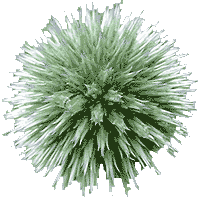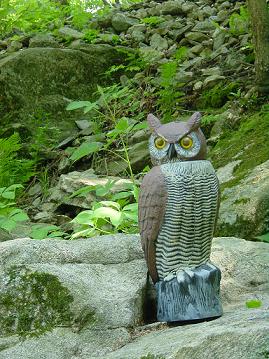The first part of this short story is here.
———
|
She heard the wolf’s steps thump-thumping away and again, she thought to herself, “What do I do now?”
Her heart was still running fast inside her, and she felt that she was breathing quickly. But the wind outside her was quite powerful, and calmed her. Soon, she breathed more calmly. The little zinnia girl-flower realized that as a flower, the wind seems very, very strong, and it could blow her side to side. She wanted to see herself. How could she be a flower? What kind of flower? All she saw were the outsides of her petals, bright orange. |
 |
She looked straight up at the tree branches and the light blue sky beyond the branches. She looked at the trees all around her – there was a squirrel running around the trunk of one tree. She looked at the roots of the trees in the earth, and sawa a frog in the moss at the bottom of one of the trees. And she saw the outside of her bright orange petals. The wind was very loud and strong on a thin flower. She asked aloud, rather matter-of factly, “Who am I?”
“You-ou-ou are a bright beautiful zinnia, my dear,” answered a very soft voice. The little girl-flower thought she was dreaming.
“A zinniomadeer?”
“Oh no, ha ha ha, no, no, no, my dear. You are a zinnia,” answered the voice, and the word zinnia floated on the strong word.
“I am a zinnia?”
“Yes, you are,” the voice laughed comfortably and softly. “You are.”
“Do I like being a zinnia?”
“You tell me,” answered the soft voice.
“And who are you?”
 |
“Smell me,” said the soft voice. And the girl-flower reached her neck up to the sky and smelled, smelled, smelled, “You are the flower that my mother has in the late spring near the house!” “Who am I?” the soft voice asked. “You are a Penelope?” “Close,” and the soft voice laughed, “I am a peony.” “A peony. Where are you?” asked the zinnia girl-flower. “Look behind you,” answered the voice. And the girl flower started to shake, but she could not turn around, “But how can I look behind me?” “You must bend your stem as if you were bending your little girl knees, and then turn around.” |
And the zinnia-girl flower did, and she saw the most welcoming, the softest, the most comforting peony she had ever seen.
“Ohhhhh,” said the little girl, “You are like home.”
“Maybe,” said the peony humbly. “Many of the flowers know me and ask me about how they should reach for the sunshine and how they should position their roots for the water. Maybe I am like home around here.” She suddenly appeared a little bit shy.
“What should I do, Ms. Peony?” asked the girl-flower.
“What do you mean?”
“How can I go home to my mother and father?”
“Oh, that I don’t know about,” said the peony, “You are a flower.”
“But when it gets dark, my mother will worry, and I will want to sleep in my bed.”
“Ohhh, we have never had that happen before,” said the peony.
“What if you don’t get home by the time it gets dark?”
“Then my mother and father will worry, and they might cry, and they’ll come outside to look for me.”
(to be continued here in the third part…)
—————————————————————
Story by Senia.
Images by IconBazaar.



